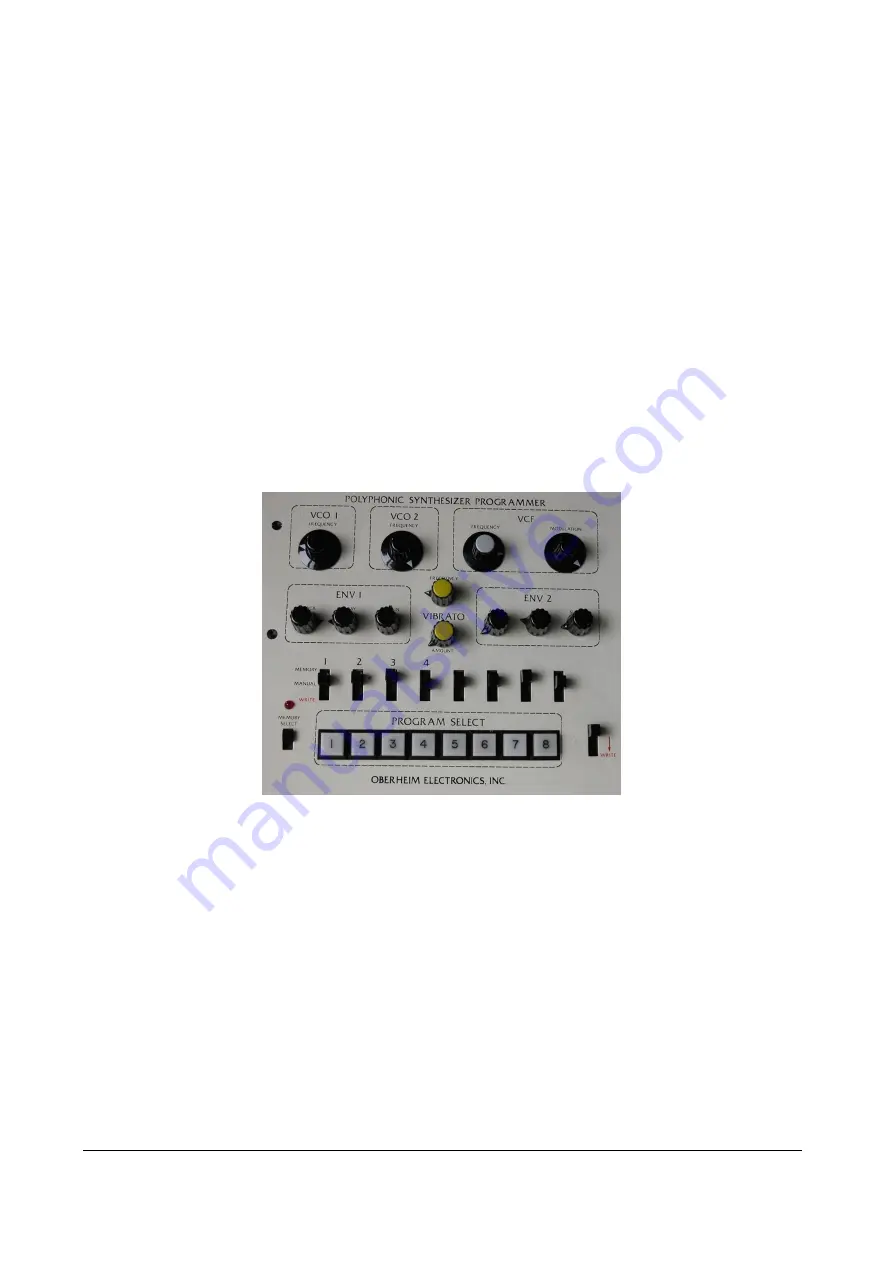
ARTURIA – Matrix-12 V – USER MANUAL
10
1.1.3.3
Presets
A famous, perhaps apocryphal story about a well-known multi-keyboardist puts the
early days of analog synthesizers in perspective: it is said that whenever he came
up with a sound he really liked on one of his Minimoogs, he would leave the controls
on that synthesizer exactly as they were and go buy another Minimoog.
True or not, it is true that back in the day, people had to write down the values for
every knob and switch if they wanted to recreate a sound later (and didn’t want
to buy another synth). Here again Oberheim led the pack in the development of
the Programmer (1976), a device that could store and recall any one of 16 presets,
each containing the parameters for up to eight SEMs at a time. And the SEMs didn’t
have to have identical settings, either, so each preset could contain wildly different
sounds from SEM voice to SEM voice.
But the parameter controls on the Programmer also allowed the user to program
all eight SEMs at the same time so they would sound like a single instrument if
desired. Cassette backup was possible too, which allowed for the creation of a
potentially infinite patch library.
The Oberheim Programmer, circa 1976
1.1.3.4
Drum machines
Oberheim introduced the DMX (1981) and DX (1983), which became the
foundation for scores of hit records in the ‘80s and beyond. They weren’t the first
sample-based drum machines, but soon they added a new twist: The Oberheim
Prommer (1986) effectively turned the DMX and DX into samplers, in all their 8-bit
glory. All the user had to do was open the drum machine and swap a chip (an
EPROM), being careful to avoid static electricity and not to bend or break any pins!





































